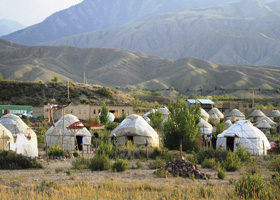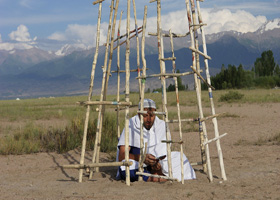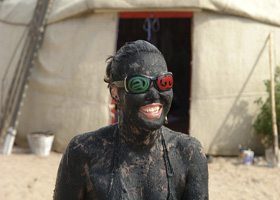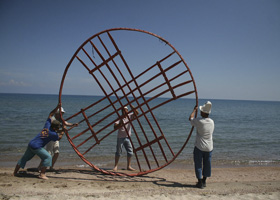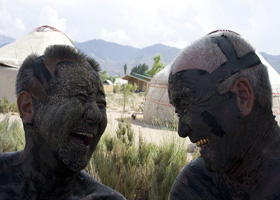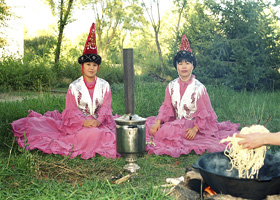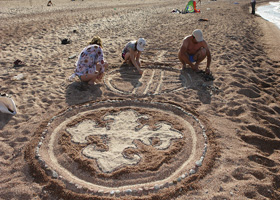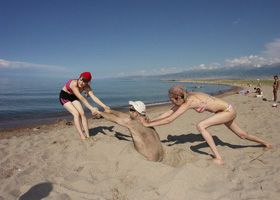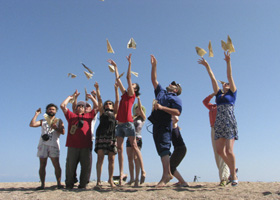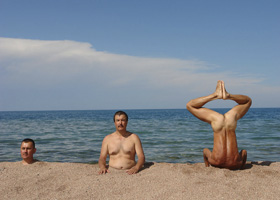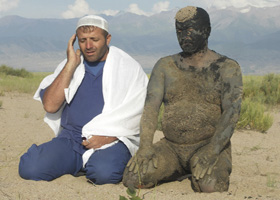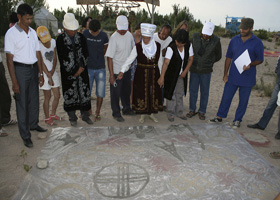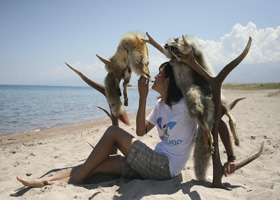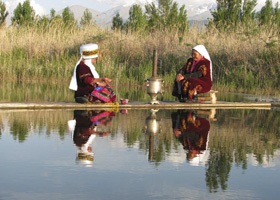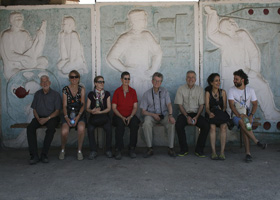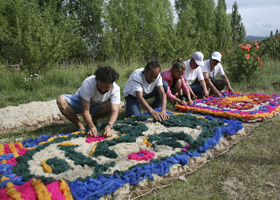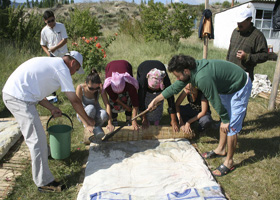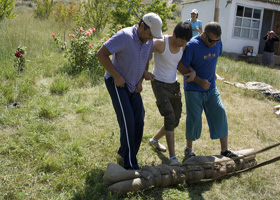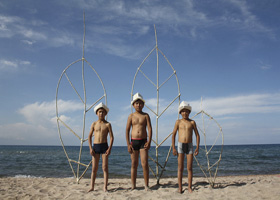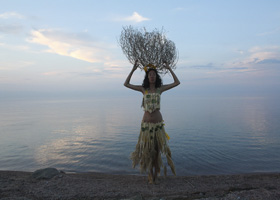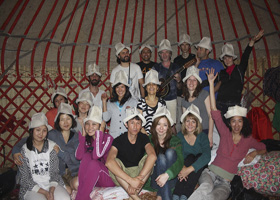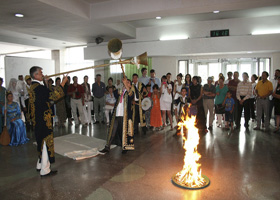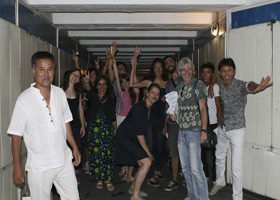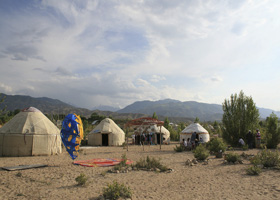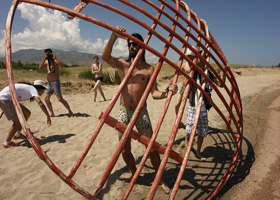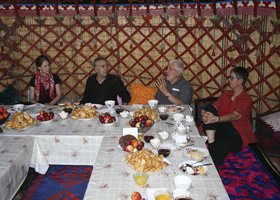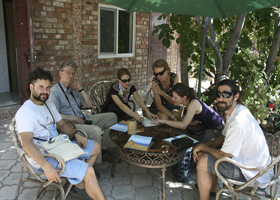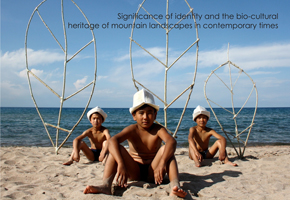2012 NOMADIC ART CAMP
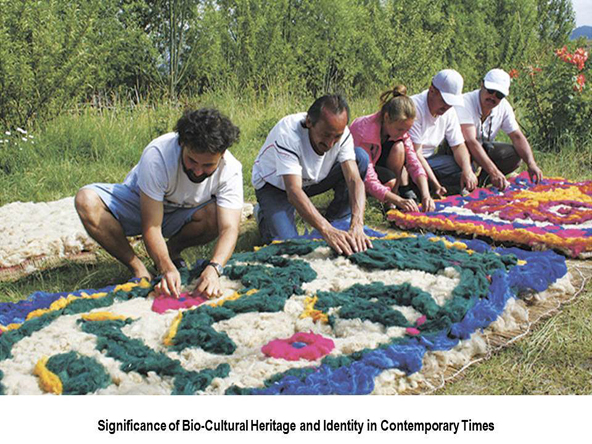
Nomadic Art Camp 2012: The Significance of Identity and Biocultural Heritage of Mountain Landscapes in Contemporary Times
The 2012 Camp was a multifaceted initiative that integrated intellectual discourse, collaborative creativity, and artistic exploration. Structured around three key components, this project aimed to foster cross-cultural dialogue and inspire innovative artistic interpretations of themes rooted in nomadic traditions, local histories, and contemporary practices.
The first component of the project was an intellectually stimulating symposium held in Bishkek, Kyrgyzstan. This gathering brought together artists, philosophers, and curators from a diverse range of countries—including Kyrgyzstan, Kazakhstan, Tajikistan, Turkey, Switzerland, France, and Germany—to exchange ideas and explore the intersections of art, culture, and the philosophy of nomadic life. Through presentations, discussions, and debates, participants delved into the historical and conceptual foundations of nomadic identity, the evolution of contemporary art in Central Asia, and the role of art in both global and local contexts. This symposium not only provided the theoretical foundation for the project’s artistic endeavors but also served as a platform for building lasting connections among creatives from both international and regional backgrounds.
The second phase of the project was the Nomadic Art Camp, an immersive artistic experience set against the breathtaking backdrop of Issyk-Kul Lake. Rich in history and natural beauty, this location served as the perfect setting for translating the theoretical ideas discussed during the symposium into tangible artistic expressions. Artists collaborated closely, drawing inspiration from the nomadic lifestyle, the surrounding environment, and the philosophical insights shared during the symposium. The camp was designed not only as a space for individual artistic exploration but also as a forum for cross-disciplinary collaboration. Participants experimented with various media—including sculpture, performance, painting, and installation—to reflect on themes such as movement, home, cultural exchange, and the evolving experience of nomadism in the modern world.
The final component of the project involved a series of exhibitions showcasing the contemporary works created during the Nomadic Art Camp. Held at the prestigious Kyrgyz National Museum of Fine Arts in Bishkek and subsequently in various cities across Kyrgyzstan, these exhibitions provided a platform for both local and international audiences to engage with the creative outputs of the artists. The displayed artworks ranged from conceptual pieces to interactive installations, each offering a unique interpretation of the central themes explored during the symposium and the art camp. This exhibition not only celebrated the artistic achievements of the participants but also provided an opportunity to reflect on the cultural exchange and collaborative process that unfolded throughout the project.
Overall, the Nomadic Art Camp 2012 was a dynamic and transformative initiative that bridged the theoretical and artistic realms. It fostered international collaboration while addressing critical questions surrounding cultural identity, mobility, and the role of art in a rapidly evolving world. The Nomadic Art Camp 2012 also highlighted the crucial role of art in preserving and reinterpreting cultural heritage in contemporary times. By immersing the artists in the unique landscapes of Kyrgyzstan, the camp prompted deep reflections on the intersection of tradition and modernity. Additionally, the project emphasized the importance of cross-cultural exchange, as the participating artists drew from diverse cultural backgrounds to shape their works. The collaborative nature of the initiative encouraged innovative solutions to the challenges posed by globalization, environmental degradation, and the loss of cultural identity.
Artistic Direction and Curatorial Leadership: Shaarbek Amankul
